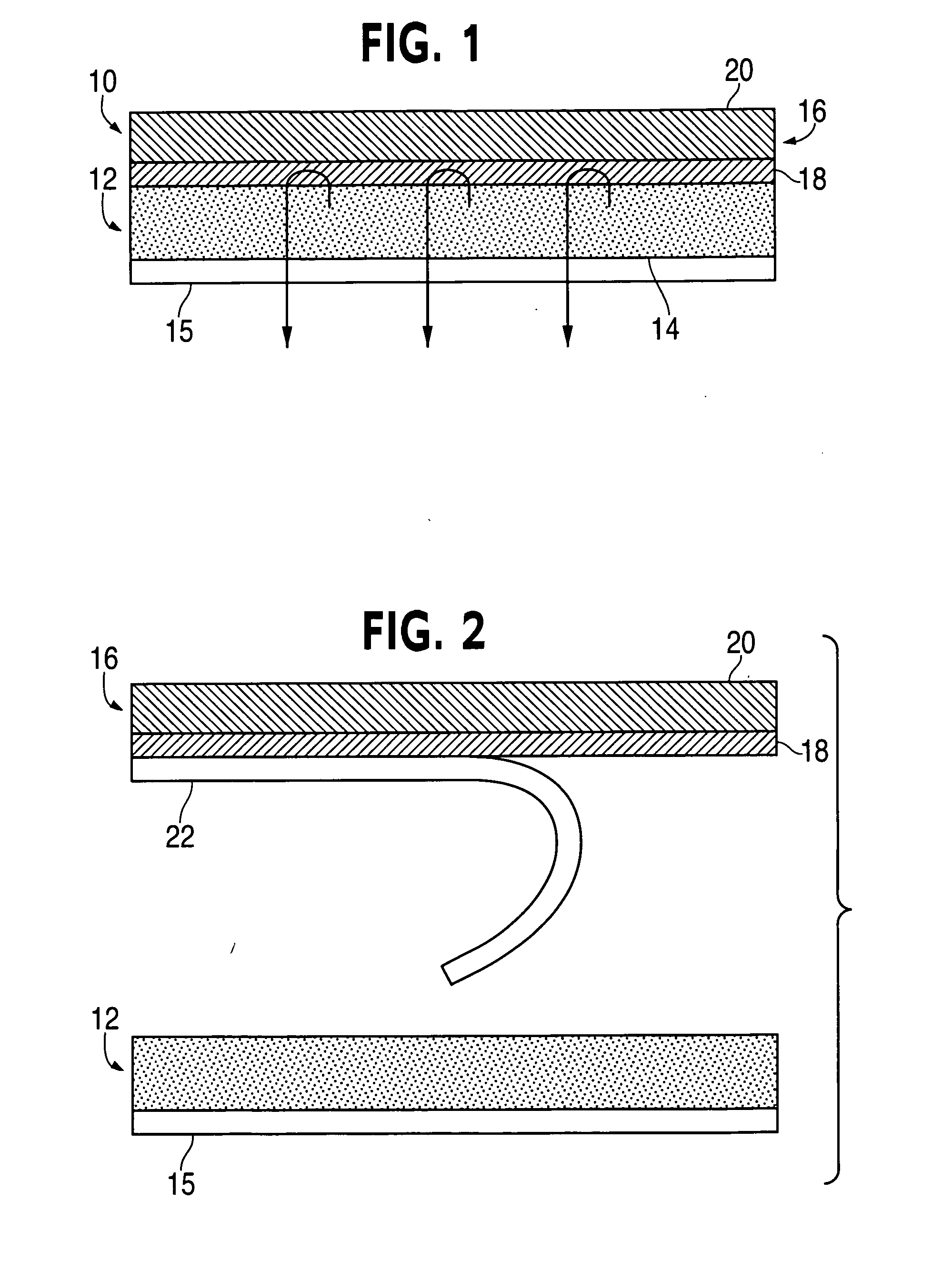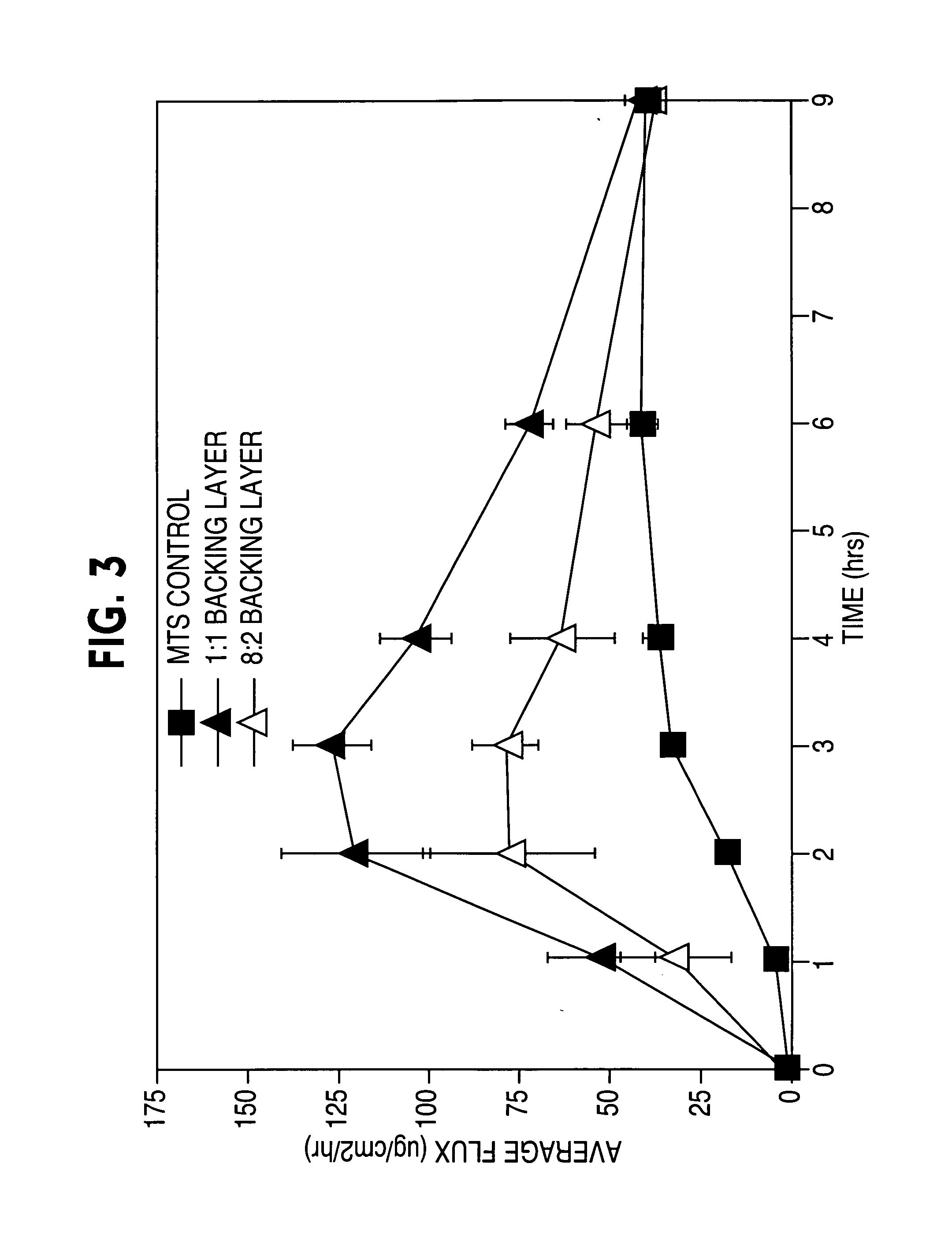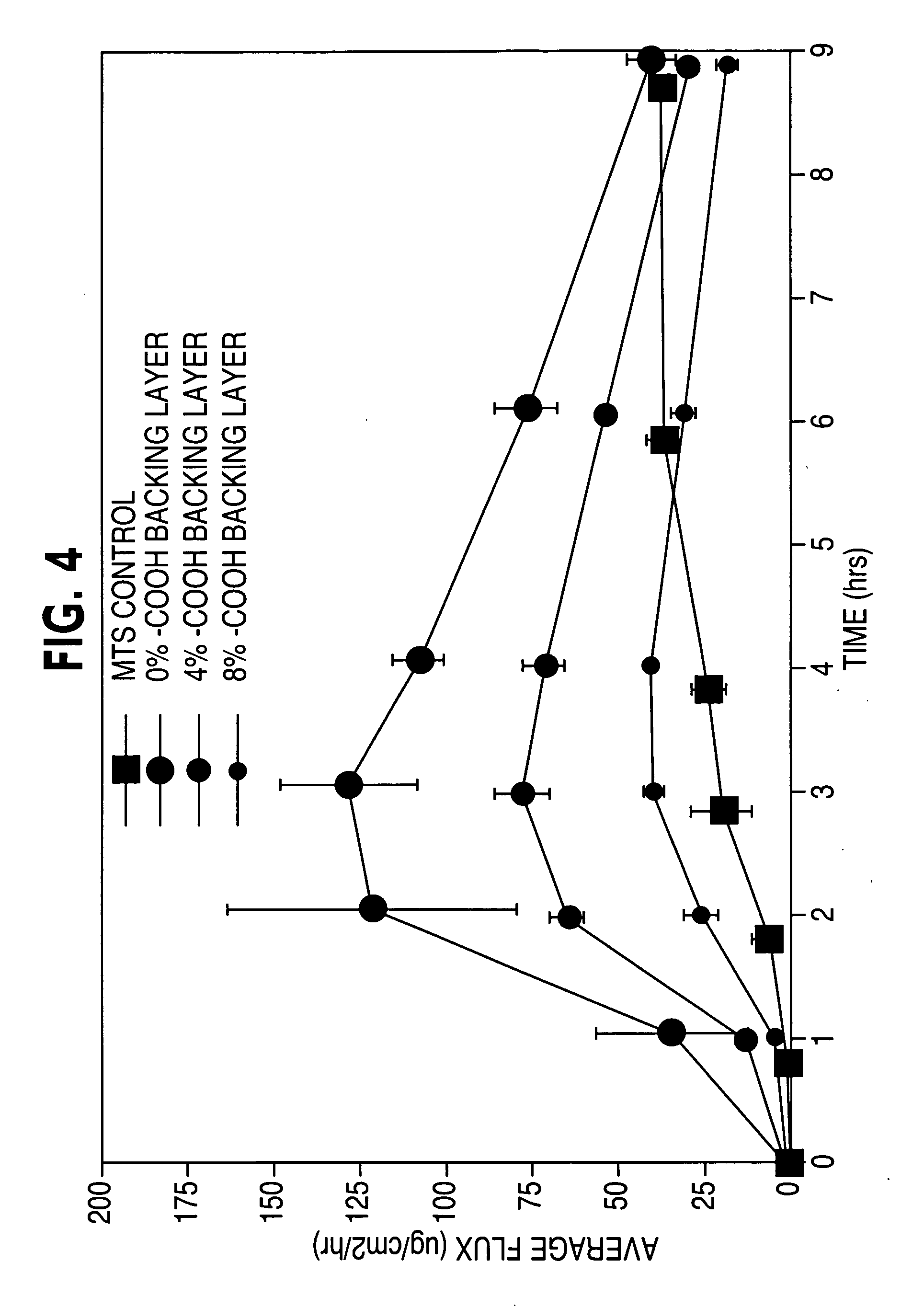Compositions and methods for controlling drug loss and delivery in transdermal drug delivery systems
a transdermal drug and drug delivery technology, applied in the direction of drug compositions, bandages, dressings, etc., can solve the problems of adverse effects of such carriers or matrix, and the plasticizing effect of such drugs on the carrier, so as to prevent or minimize drug loss and/or other volatile components, and optimize drug loading.
- Summary
- Abstract
- Description
- Claims
- Application Information
AI Technical Summary
Benefits of technology
Problems solved by technology
Method used
Image
Examples
example 1
[0133]In Example 1, two acrylic-based adhesive coatings were prepared that each contained two different non-functional monomers but in differing ratios, 1:1 and 8:2. No effect should have been observed based upon the non-reactive properties of non-functional acrylic adhesives with drugs. As seen in FIG. 3, the effect of varying the monomeric ratios significantly influenced both delivery rate and profile, one being of a first-order type (fast onset and amount followed by depletion) and the other being near zero-order (“sustained”).
example 2
[0134]In Example 2, three acrylic-based adhesive coatings were prepared that had differing functionality, one being non-functional and the other two being carboxy-functional but with varying concentrations (4% and 8%) of the carboxy-functional monomer acrylic acid. As indicated in FIG. 4, the non-functional acrylic coating imparted the fastest drug onset and higher drug depletion than either carboxy-functional coating. Furthermore, the use of carboxy-functional monomers decreased drug onset and provided a near zero-order delivery profile. Accordingly, the addition of functional moiety to the acrylic coating, in this case acidic functionality, increasingly diminishes both drug flux and onset with increasing carboxy concentrations, but can provide a near zero-order delivery rate profile.
example 3
[0135]In Example 3, three acrylic-based adhesive coatings were prepared each using the acrylic adhesive coating described in Example 2 containing 8% carboxy-functionality but applied to the backing at three different thickness, about 2.5 mg / cm2, about 5 mg / cm2 and about 7.5 mg / cm2. As indicated in FIG. 5, the flux rate increases as the acrylic adhesive coating thickness decreases, while the delivery profile approaches near zero-order as the acrylic adhesive coating thickness increases.
PUM
| Property | Measurement | Unit |
|---|---|---|
| tack | aaaaa | aaaaa |
| weight | aaaaa | aaaaa |
| drug permeation | aaaaa | aaaaa |
Abstract
Description
Claims
Application Information
 Login to View More
Login to View More - R&D
- Intellectual Property
- Life Sciences
- Materials
- Tech Scout
- Unparalleled Data Quality
- Higher Quality Content
- 60% Fewer Hallucinations
Browse by: Latest US Patents, China's latest patents, Technical Efficacy Thesaurus, Application Domain, Technology Topic, Popular Technical Reports.
© 2025 PatSnap. All rights reserved.Legal|Privacy policy|Modern Slavery Act Transparency Statement|Sitemap|About US| Contact US: help@patsnap.com



